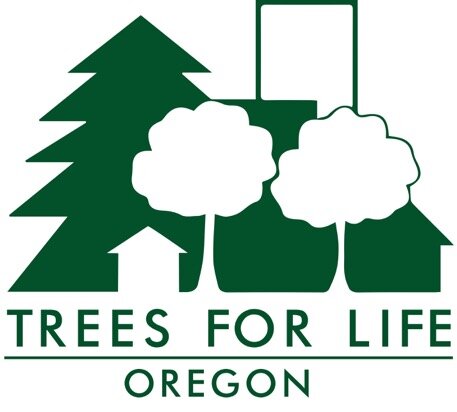Trees, Health, and Gentrification
Trees Benefits and Gentrification
At a presentation to Portland Parks & Recreation staff, U.S. Forest Service researcher Geoffrey Donovan highlighted findings from his co-authored studies over the past decade on the benefits of urban trees and their role in green gentrification in Portland.
Here are some of the most striking of their findings as reported by Donovan.
Better Birth Outcomes. Women living with trees within 15 meters (49.2 feet) of their homes were less likely to have underweight babies. In 2011, when the study appeared, he said, no one had found a link between the natural environment and birth outcomes; since then at least 15 studies have provided evidence of a connection between residential green space and healthier babies.
Less ADHD and Better Surgery Recovery. In New Zealand, children living in greener neighborhoods were less likely to get ADHD than those who didn’t, and people recovering from hip surgery lived longer and took fewer opioids.
Stronger Test Scores. Portland children with more trees around their home did better on standardized tests, a finding that held across neighborhoods with different profiles including race and household income.
Less Crime. The presence of large, mature trees was associated with a lower risk of crime, he found as early as 2012. He hypothesizes that mature trees send a signal to potential criminals that a neighborhood is well cared for and if they were to commit a crime they’d be more likely to be observed and caught.
The Green Gentrification Question
Single-family homes in Portland with a street tree in front sold for an average of $7,000 more than an equivalent home without a tree. A study the next year, in 2011, showed that trees were also associated with higher rents. The findings, said Donovan, suggest that homeowners and home renters value trees and are willing to pay a price premium for them.
Using Friends of Trees (FoT) planting data, researchers found that only 1.3 percent of the price increase for homes in desirable neighborhoods was due to the presence of neighborhood trees.
The presence of a nearby light rail stop, or an anticipated stop coming within two years added almost $5,500 to a home price
A neighborhood’s listing on the National Register of Historic Places added $21,000
A home, large or small, that was surrounded by large houses added $559
Homes in neighborhoods with older homes had a $398 premium
Each 1 percent increase in a neighborhood’s existing tree cover was associated with a $882 home price premium
Each new street tree planted by FoT was associated with a $131 premium. Note that the premium for a yard tree was three times greater than that, maybe, posited Donovan, because FoT carries mostly large yard trees. (Trees for Life Oregon note: Yards in older homes can often accommodate mature large-form trees, and about half if not more of Portland’s tree canopy lies in private yards, not in public right-of-ways. But City code rarely protects private yard trees from being removed by a homeowner or developer, despite their high value.)
Importantly, that $131 premium did not appear until 6 years after planting. (TFLO note: Most newly planted trees take time to provide health, environmental, and aesthetic benefits.) As trees age, said Donovan, the association between trees and neighborhood desirability goes up. Using a different, smaller sample to examine how these tree premiums grew over time, researchers found that from 6 years after planting to 12 years after planting the added home premium rose from $119 to $265.
Tree Canopy and Low-Income Residents
Making a neighborhood more desirable can have unintended negative consequences such as displacing low-income residents, often people of color, noted Donovan. Whiter, better-off people buy homes in neighborhoods with rising prices. But in light of the health and other benefits that trees bring, he warned, we should not stop planting trees. “Withholding trees would compound the disadvantages that low-income residents already face.”
However, tree planting shouldn’t happen in isolation, he said. Tree planting efforts, no matter who does the planting, should be done in concert with affordable housing providers and City offices or nonprofits that provide rent assistance or help people purchase their homes.
In sum, Donovan and co-authors found that trees are not the primary driver of gentrification, which stems from many other features that contribute to a neighborhood’s desirability. While a nearby light rail line adds more than $5,000 to a home’s value, “how many trees [at $131 added value per tree after 6 years] would you have to plant to get to that much added value?” asks Donovan. “We are absolutely not at the point where we should stop planting trees because of gentrifying effects,” which accrue from so many factors of which trees are only a small one.
